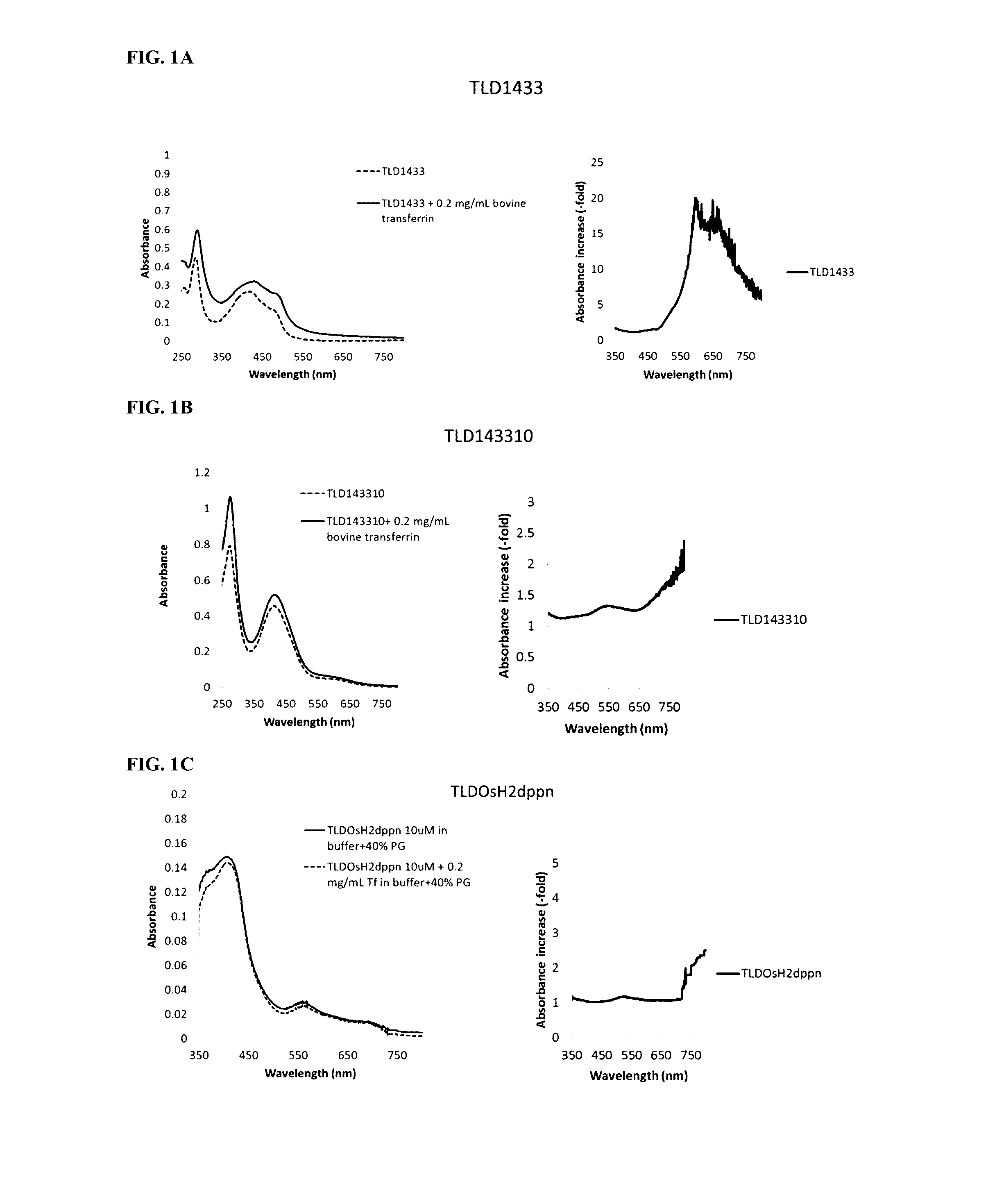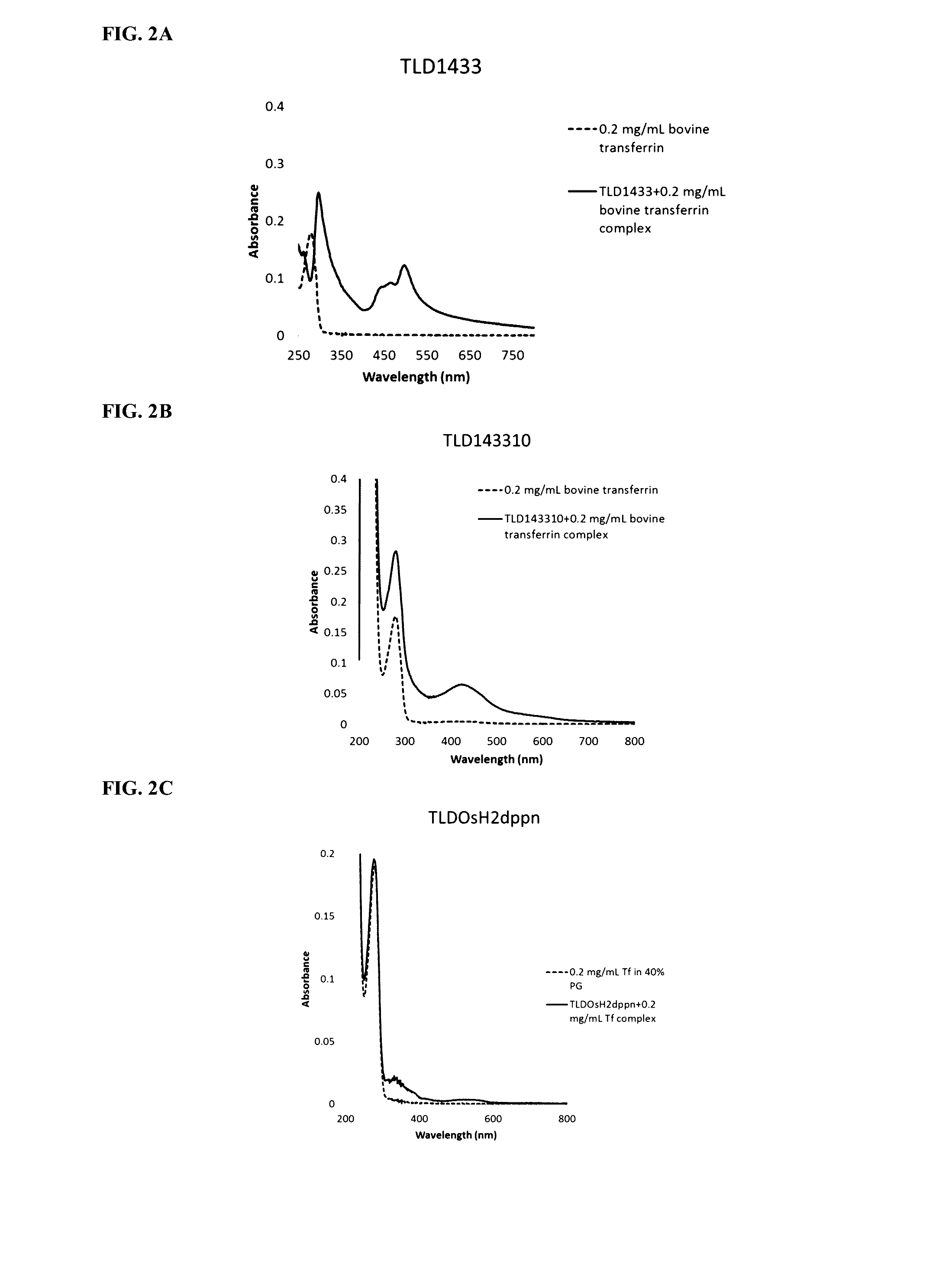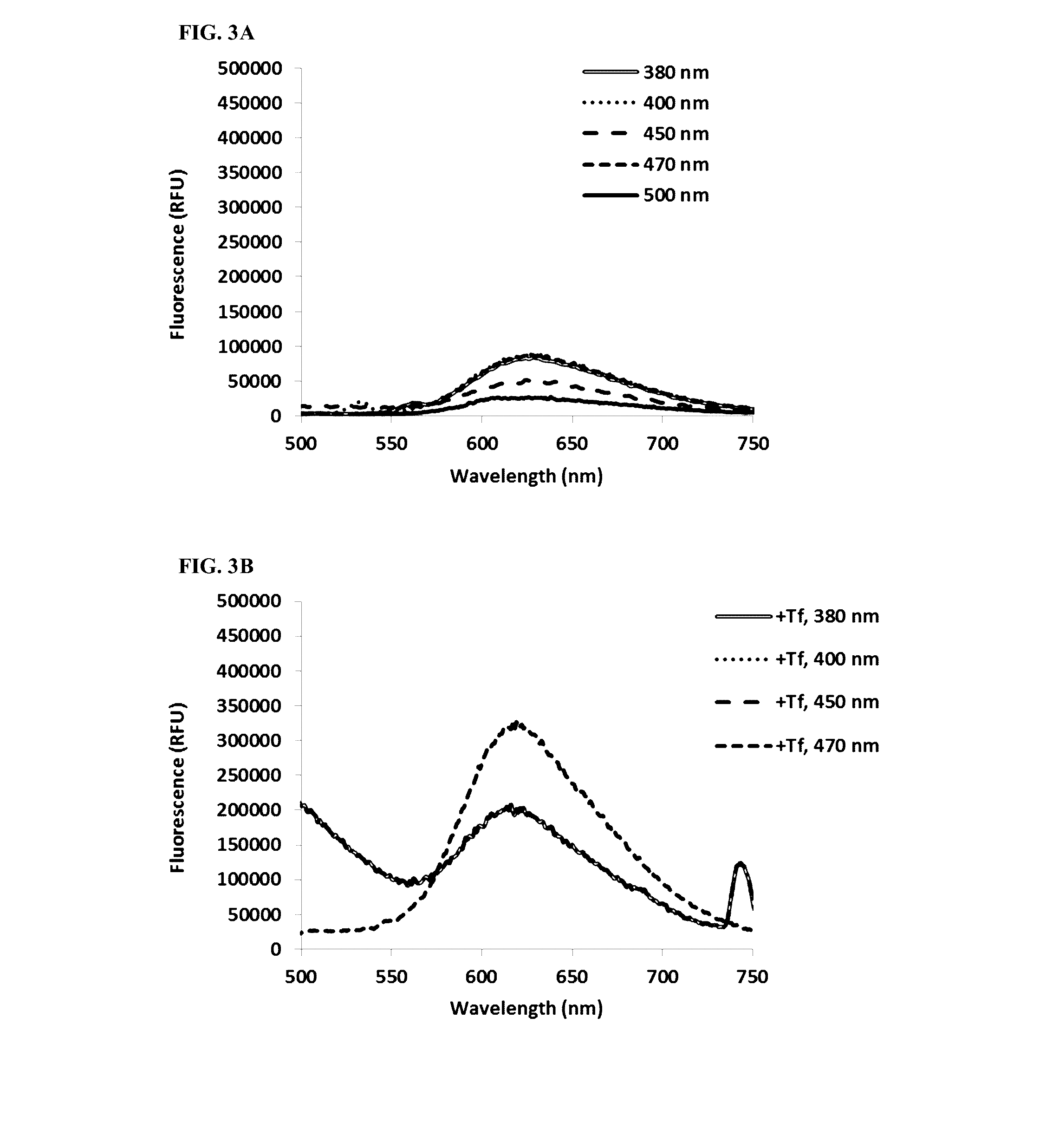Metal-glycoprotein complexes and photodynamic therapy of immune privileged sites with same
a technology of metal-based coordination complexes and photodynamic therapy, applied in the direction of heavy metal active ingredients, peptide/protein ingredients, therapy, etc., can solve the problems of large pss that is difficult to apply topically, non-selectivity of delivery, and difficult topically delivery of metal-based coordination complexes and pdcs to biological targets, etc., to achieve increased uptake by tumors, increase the effect of uptake and tumor suppression
- Summary
- Abstract
- Description
- Claims
- Application Information
AI Technical Summary
Benefits of technology
Problems solved by technology
Method used
Image
Examples
example 1
[0167]Transferrin (0.2 mg / mL) was incubated with different photosensitizers (10 uM) and the absorbance spectra were obtained. FIG. 1A shows an increase in absorption by Ruthenium (TLD1433). FIG. 1B shows Ruthenium-Rhodium (TLD143310) based PSs and FIG. 1C shows Osmium (TLDOsH2dppn) based PSs in the presence of transferrin. For each photosensitizer, the left plot shows the absolute difference in absorbance with transferrin vs. without transferrin. The right plot shows relative increase in absorbance with transferrin vs. without transferrin. Note that a large relative increase in absorbance may be accompanied by a small absolute difference and vice versa.
[0168]The binding of the photosensitizers to transferrin was accompanied by an increased absorption in visible and NIR range, especially at longer wavelengths. It is noteworthy that negligible absorption of the photosensitizers in red & NIR range became substantial upon binding of these photosensitizers to transferrin.
example 2
Binding Signatures
[0169]Transferrin (0.2 mg / mL) was incubated with the photosensitizers (10 uM) and absorption spectra were obtained. FIGS. 2A, 2B and 2C show transferrin binding to Ruthenium (TLD1433, FIG. 2A), Ruthenium-Rhodium (TLD143310, FIG. 2B) and Osmium (TLDOsH2dppn, FIG. 2C) based photosensitizers.
[0170]Binding of Ruthenium and Ruthenium-Rhodium-based photosensitizers to transferrin is characterized by a characteristic signature: an increased peak of absorption at 280 nm and a new peak in 400-500 nm range. Osmium-based photosensitizers demonstrate different binding signature: new peaks in 300-400 nm and 500-600 nm ranges.
example 3
[0171]Fluorescence of TLD1433 (10 uM) was measured quartz cuvettes without Tf (in water) and in the presence of 0.2 mg / mL Tf (in phosphate buffer+100 mM NaCl, pH=7.0). Fluorescence was measured at different excitation wavelengths (380, 400, 450, 470, 500 nm).
[0172]TLD1433 demonstrates measurable fluorescence that is intensified in the presence of transferrin. With no transferrin (FIG. 3A), maximal fluorescence was evoked at excitation wavelengths 380, 400 and 470 nm (emission maximum 624 nm). In the presence of transferrin (FIG. 3B), fluorescence was strongly increased, especially at 470 nm excitation, with emission maximum slightly shifted towards shorter wavelengths (619 nm).
[0173]Detectable fluorescence of TLD1433 makes it useful for diagnostic purposes (detection of selective uptake of TLD1433, preferably by cancerous tissues).
PUM
| Property | Measurement | Unit |
|---|---|---|
| wavelengths | aaaaa | aaaaa |
| wavelengths | aaaaa | aaaaa |
| excitation wavelengths | aaaaa | aaaaa |
Abstract
Description
Claims
Application Information
 Login to View More
Login to View More - R&D
- Intellectual Property
- Life Sciences
- Materials
- Tech Scout
- Unparalleled Data Quality
- Higher Quality Content
- 60% Fewer Hallucinations
Browse by: Latest US Patents, China's latest patents, Technical Efficacy Thesaurus, Application Domain, Technology Topic, Popular Technical Reports.
© 2025 PatSnap. All rights reserved.Legal|Privacy policy|Modern Slavery Act Transparency Statement|Sitemap|About US| Contact US: help@patsnap.com



